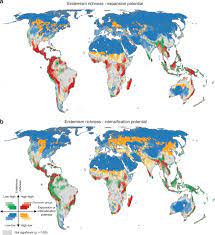Global Cropland Expansion:

According to a new study, cropland area across the world increased 9% and cropland Net Primary Production (NPP) by 25% from 2003-2019.
- The growth was primarily due to agricultural expansion in Africa and South America.
Cropland Area:
- Cropland is defined as ‘land used for annual and perennial herbaceous crops for human consumption, forage (including hay) and biofuel’.
- Perennial woody crops, permanent pastures and shifting cultivation are excluded from the definition.
- Herbaceous energy crops are perennials that are harvested annually.
Cropland Net Primary Production
- Net Primary Production (NPP) is defined as the difference between the energy fixed by autotrophs and their respiration, and it is most commonly equated to increments in biomass per unit of land surface and time.
- An autotroph is an organism that can produce its own food using light, water, carbon dioxide, or other chemicals.
Respiration is a chemical reaction which occurs in all living cells, releasing energy from glucose.
Cropland Expansion:
- The largest cropland expansion was observed in Africa.
- In Africa, cropland expansion accelerated from 2004-2007 to 2016-2019, with a more than two-fold increase in annual expansion rates.
- The largest proportions of natural vegetation conversion to croplands (excluding dryland irrigation) were found in Africa, southeast Asia and South America.
- Global per capita cropland area decreased 10% during the period due to population growth but the per capita annual cropland NPP increased by 3.5% as a result of intensified agricultural land use.
- The agricultural expansion is often explained as a direct consequence of the global increase in food and energy requirements due to continuing population growth.
- The global population increased by 21% from 2003-2019.




